Listening to Creation at the Line 3 Pipeline
Throughout this past summer, calls from Indigenous water protectors to join the protests at the Line 3 pipeline in Minnesota kept nudging me. I had never joined in direct actions on that scale before—stood at the local courthouse with a sign, yes, but traveled to a zone where people were engaged in nonviolent civic protests and getting arrested, no.
Canadian company Enbridge’s operation and recent replacement project of the Line 3 pipeline—running from Edmonton, Alberta, to refineries in the U.S. Midwest—has a history of oil leaks and chemical fracks desecrating pristine lakes, rivers, and land. Originally built in the 1960s, the pipeline was operating at a reduced capacity due to age and corrosion. Enbridge’s proposal to install an extension and a replacement line was strongly opposed by environmental and Indigenous groups, particularly in Minnesota, the last stage of the expansion. The new pipeline route crosses Anishinaabe lands in northern Minnesota and endangers their livelihood of cultivating and harvesting sacred manoomin, wild rice. Furthermore the $8.2 billion project continues our harmful dependence on burning fossil fuels and diverts attention and investment away from more sustainable solutions to energy demands.
Quaker Earthcare Witness held training sessions for those compelled to act on this issue, whether from home or by joining action on the line. Hearing from other Quakers who had traveled to Line 3 earlier this year and to Standing Rock to protest the Dakota Access Pipeline in 2016 made joining with the Indigenous water protectors feel doable. Through these trainings, I connected with other Friends compelled to go to the pipeline, and with support from them, my meeting, and my family, I went.
Everything about this journey seemed embraced by Spirit: the Friends I joined in this action, the ease of travel, the decision to join water protectors at Red Lake Treaty Camp, the bald eagle that flew with us as we drove toward camp—pointing and reassuring us that we were going in the right direction.
There were some protesters already at the camp when two Friends and I arrived, bringing the total to 12. We quickly got into a daily routine: volunteering for cooking, dish washing, camp cleanup, hauling water, gate security, and other tasks.
Several weeks before our arrival, Enbridge had completed drilling the pipeline under this section of the Red Lake River. During that active drilling phase, Red Lake Treaty Camp’s population had swelled to over 100 as the water protectors held protests and prayers. Still Enbridge drilled, and once completed, both the machinery and protesters moved. Though the pipeline section was finished, Indigenous leaders continued to ask for help to keep this camp functioning. Today, Red Lake Treaty Camp is still sacred land but without the sound of machinery.
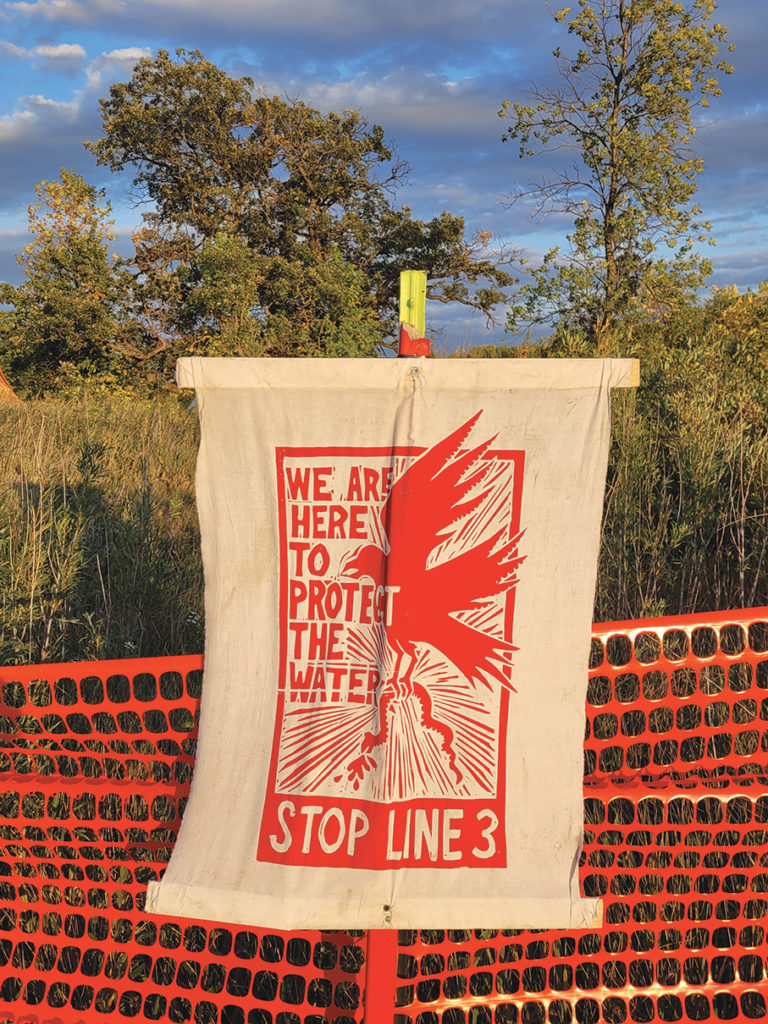
Stop Line 3 sign on perimeter fence.
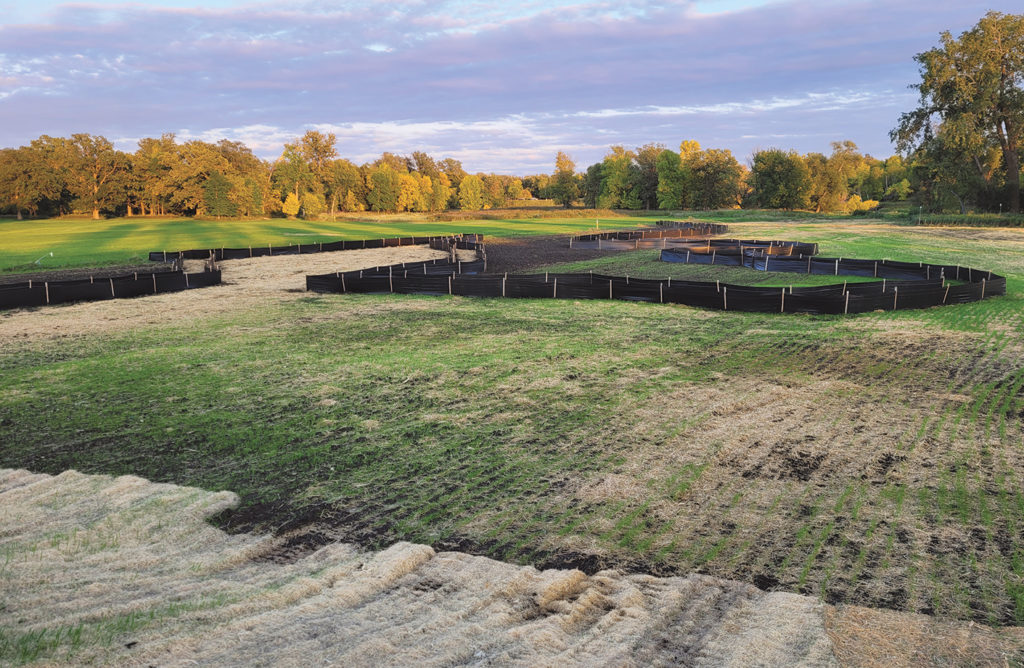
“Black snake” drilling remains left behind by Enbridge.
Each morning I awoke in my tent to the sound of geese honking and truck horns blaring. Not all of the locals were happy with our presence. There were problems during the summer with disruptive folks driving through camp, so orange plastic construction fencing was installed along the highway perimeter—hardly secure but enough to deter. On that fence, water protectors hung signs and murals proclaiming the cause: “Water is Life,” “Stop Line 3,” and “Honor the 1863 Old Crossing Treaty.”
For months Enbridge had 24-hour security guards protecting their property, however the guards left mid-week while I was there. The day after security left, I took a stroll to view the signs along the fence, and decided to keep walking: past the pump station, over newly grass-seeded ground. I thought about how just weeks before, heavy machinery had been drilling under this land. Now, all was smoothed over and covered up—tidy evidence of a violent violation.
In an area that clearly had been drilled under, I knelt down and laid my hand on the ground. I immediately felt a great moan shudder through me. The pain was palpable and my eyes teared. I was reminded of my own hysterectomy when my insides were torn up, leaving behind the consequential pain. I left the riverbank carrying that pain.
There was a spot at camp that overlooked Enbridge’s damaged earth to the left and the river to my right. At this spot, I spent several mornings doing stretches and tai chi. On my last morning at camp, I returned there. I stretched; I did tai chi. Looking out over the river, I heard the river whisper to me, “Would you do the Turtle form?” This Qigong form emulates swimming, digging for medicine, and sharing this medicine. Swimming and sharing, swimming and sharing, I shared all the medicine I had to help heal this wound inflicted on our Mother Earth.
As I stood again, admiring the river, I heard her whisper, “Would you hula?” I had not danced hula in over five years, and before that occasion, many more years. But of course, I would hula. So I danced “Waika,” my favorite hula, giving motion to wind, trees, rain, and my love. I danced with joy, with aloha.
Despite the opposition and protests, the Line 3 pipeline was completed and has been operating since October 1, allowing Enbridge to double its capacity to 760,000 barrels of heavy tar sand oil per day, the burning of which will release enormous amounts of carbon into our atmosphere. Disregarding the objections of Indigenous peoples continues our country’s troubled relationship with the original stewards of these lands.
Going to Line 3 ticked my mental boxes for important activism: climate change, environmental degradation, treaty violations, violence to Indigenous peoples. There is another reason that I hold in equal regard: honoring our relationship with Creation. Deepening this relationship adds heartfelt urgency to our efforts to defend and restore Earth. Let us not only speak for Earth, but also listen.
Quakers are well practiced at listening for that still voice of God. We need to broaden and deepen our listening to include the voice of Creation. The voice of the rivers, trees, land, and all Creation speaks to us; we need only be still and listen.


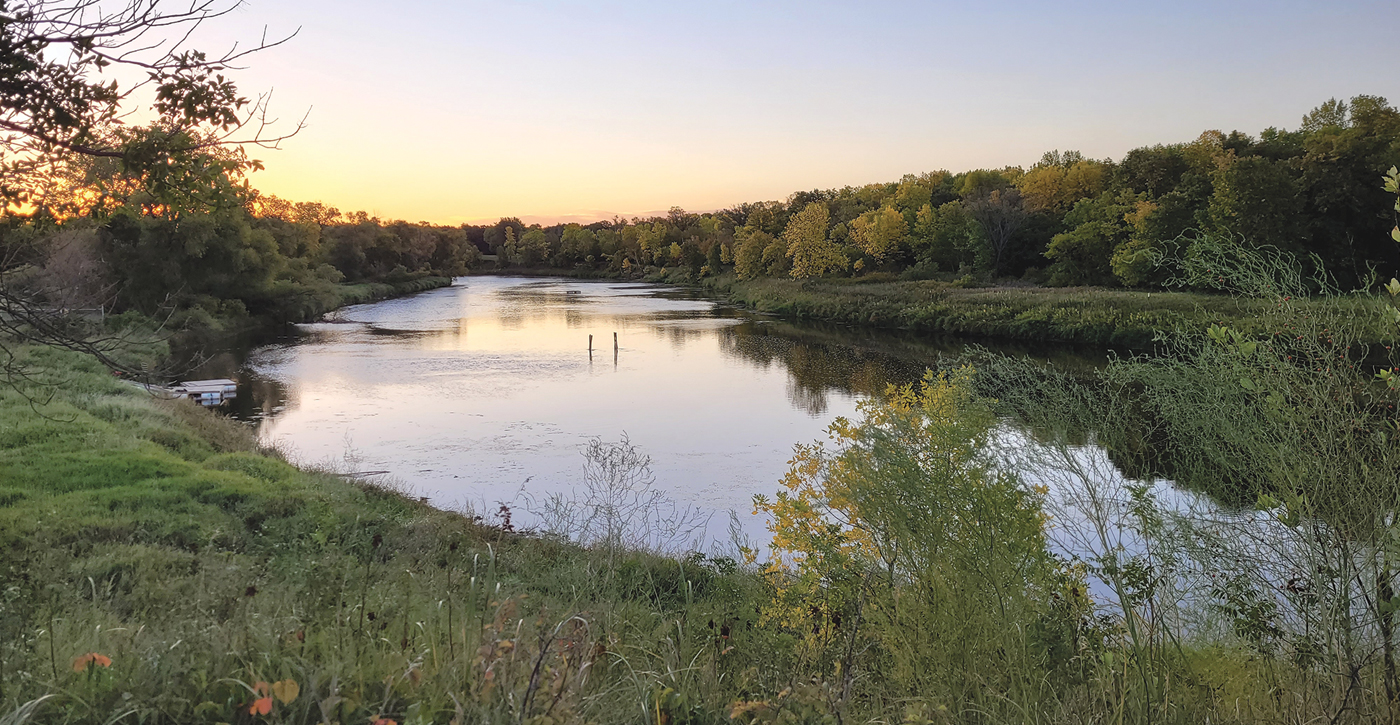
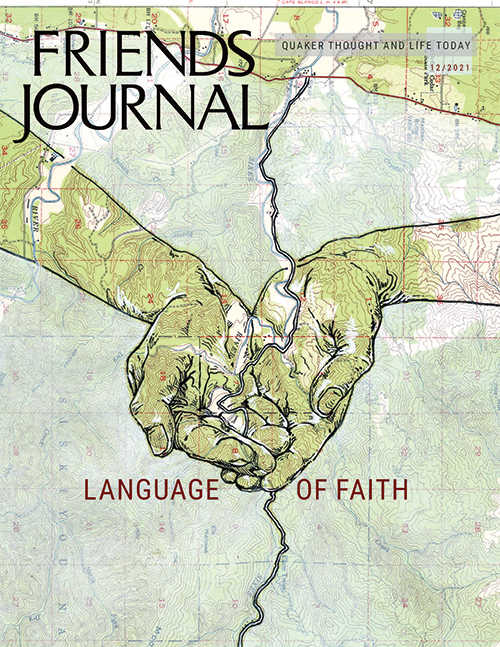

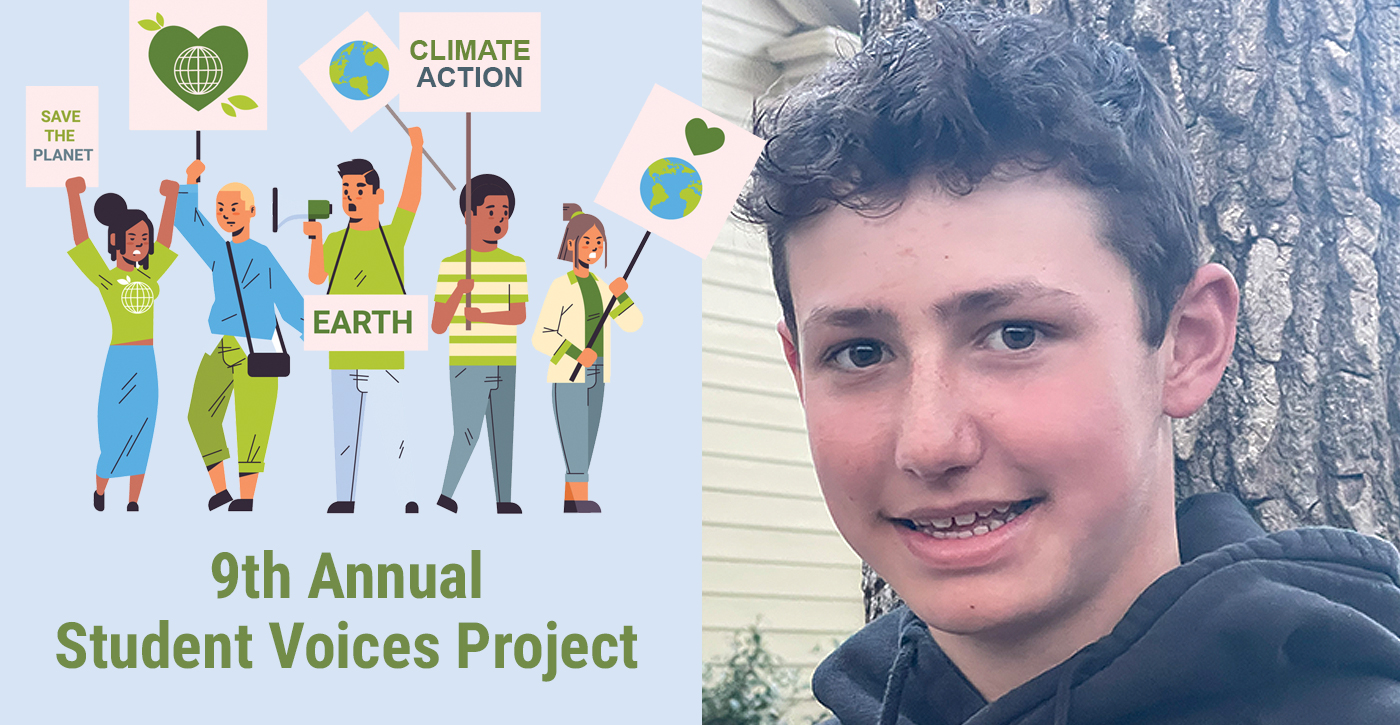

Sooner or later we will ALL learn to listen as wisdom speaks to each of us where we are. Blessings
Where is God in this? God is the Creator. We don’t need to listen to creation or nature or anything else.
“Ask the animals, and they will teach you, or the birds in the sky, and they will tell you; or speak to the earth, and it will teach you, or let the fish in the sea inform you. Which of all these does not know that the hand of the Lord has done this?” If finding confirmation of divine truth by paying attention to nature was good enough for Job, perhaps it will serve us well, too.